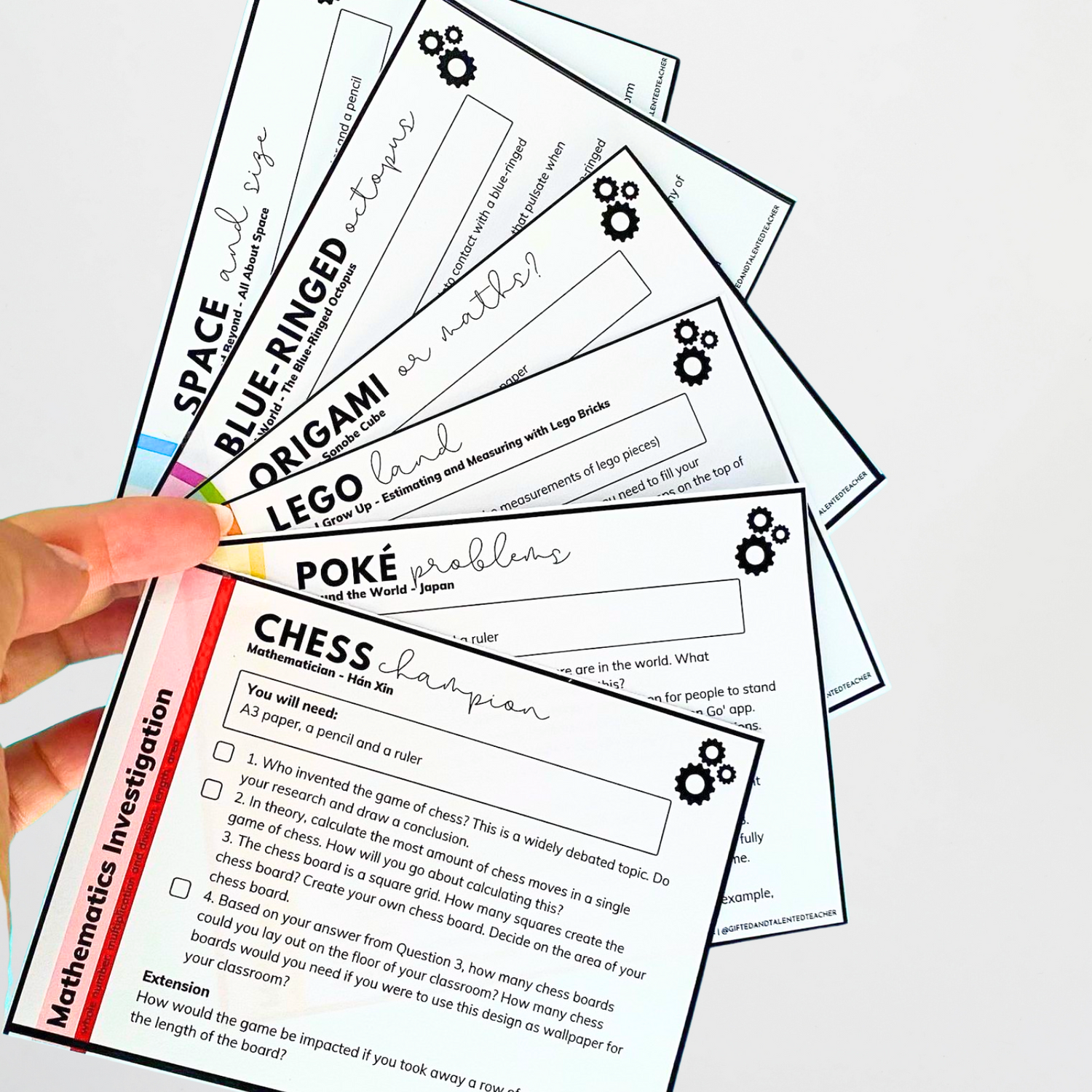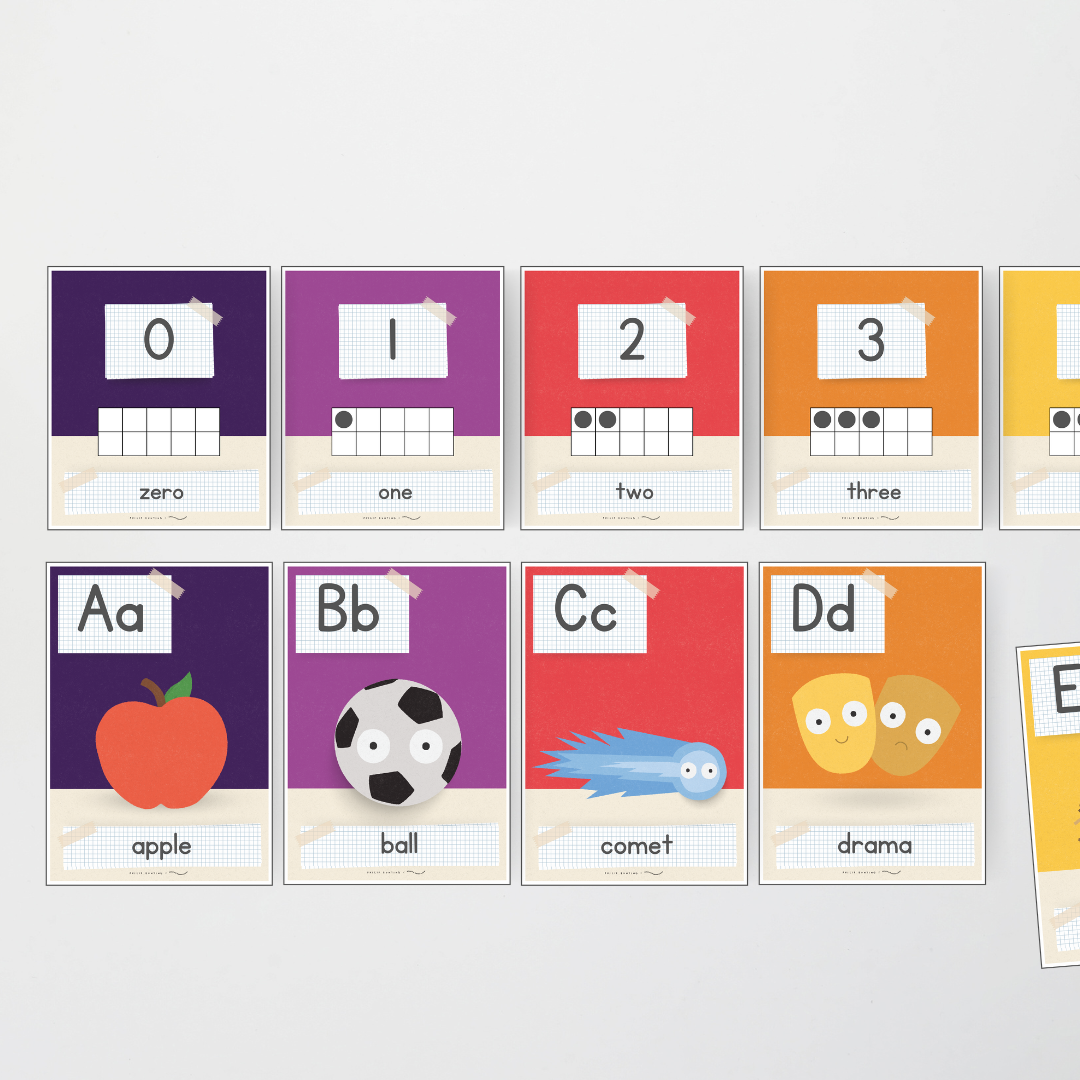When it comes to gifted education it's important to consider expansion of knowledge and depth of learning over pace through the curriculum. It's important to highlight complexity over completion, and creativity over compliance.
Our Mathematics Investigations for Gifted Learners aren't something you wrap up before recess. These are slow-burn projects designed to stretch minds, spark wonder, and elevate mathematical thinking.
If you're after 100+ investigations that dive headfirst into abstraction, pattern-seeking, and complex connections — welcome, you're home.
But, what about the learner who hasn't been identified as academically gifted and still requires a stretch in learning... perhaps something slightly more achievable? Click here to explore the range of Mathematics Investigations designed for the mainstream classroom.
Or, are you after a taster before you commit? Take a peek at the Mathematics Investigations starter pack.
Designed for Depth, Not Just Differentiation
While mainstream differentiation might look like “the same task with a twist,” our gifted investigations do something a little different. They’re purpose-built for the cognitively curious learner — the student who thrives on exploring multiple pathways, seeing mathematical patterns in unexpected places, and asking questions that even Google needs time to answer.
These investigations are open-ended by design and intended to unfold over several weeks — anywhere from half a term to a full one. This isn’t just to give students time to explore; it’s to honour the reality that rich thinking needs room to grow.
Mathematics Investigations for Gifted Learners: Abstract, open-ended, term‑long explorations with A3 infographic-style outcomes
1. Purpose-Built Challenges for the Gifted Mind
When designing Mathematics Investigations for gifted learners, depth, abstraction, and open structure are key. These aren't quick tasks — they're extended explorations.
Students engage with truly complex concepts allowing them to pursue passion-led inquiry and generate their own mathematical pathways.
2. Evidence-Based Foundations from UNSW GERRIC
According to UNSW’s GERRIC (the leading Australian centre for gifted education) effective differentiation includes academically enriching, interest-based programming that goes beyond mainstream strategies.
GERRIC's mini‑COGE modules, for instance, emphasise curriculum models that encourage critical and creative thinking, and champion inquiry-based approaches that align perfectly with this kind of investigation design.
From Investigation to Infographic
Each task culminates in a final product that’s best presented on A3 paper — because thinking this big deserves the space to match.
We recommend that students use their A3 sheet as both a visual report and an artefact of thinking. This might include:
- Annotated working out
- Research findings
- Visual representations
- Graphs, diagrams, timelines
- Written reflections or connections to the real world
- Infographic-style layouts that communicate key findings with clarity and flair
It's not just a neat and tidy "answer." It’s a demonstration of mathematical thinking, problem-solving, and creativity — all rolled into one powerful display.
Why It Works for Gifted Learners
Gifted learners crave complexity, nuance, and autonomy. These investigations allow them to:
- Choose their own mathematical adventure
- Connect concepts across disciplines
- Embrace ambiguity and multiple solutions
- Develop resilience through open-ended problem solving
- Showcase both analytical and creative strengths
And as any teacher of the gifted knows, when a student gets the chance to design, question, research, represent, and explain? That’s when the magic happens.
Final Thoughts (and your next steps)
If your students are asking, "But why does it work like that?", or "What would happen if we changed this rule?" — these investigations are for them.
Explore our Mathematics Investigations for Gifted Learners at Gifted and Talented Teacher. Each one has been thoughtfully designed to challenge, extend, and inspire — all while aligning to the Australian Curriculum and your classroom reality.
And when the walls of your classroom are lined with beautifully messy, information-rich A3 masterpieces? That’s when you’ll know it’s working.







Leave a comment
This site is protected by hCaptcha and the hCaptcha Privacy Policy and Terms of Service apply.